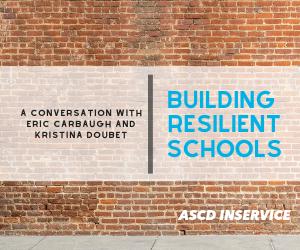What to do—and not to do—to be a better listener and colleague.
The culture of the home, the school, and the workplace changes dramatically when all members take the time to really listen to one another and provide emotional support through empathy. But it’s more difficult than it sounds—listening in this manner is complex and often stymied by judgments and misunderstandings. While some people may think they are empathizing, using certain words and phrases may actually detract from empathy.
Take the following scenarios, for example:
1. Extinguishing the Spotlight
You approach a friend wanting to express your feelings to them. However, your friend denies or deflects those feeling.
You confide to your friend:
“I’m feeling so lonely.”
Your friend responds by saying:
“Ohhh. You shouldn’t feel that way. Look on the bright side!”
Your friend just shut off the spotlight.
2. Stealing the Spotlight
With the hood up, Jim was working on his car in his driveway. His neighbor walked past and asked about the issue. Jim told him he was having difficulty with his battery and that he bought a new battery but it wouldn't hold a charge. This was costing him a lot of money, time, and trouble.
His neighbor responds by saying:
“You think you’ve got troubles? Let me tell you about my car!”
He stole the spotlight from Jim and shined it on himself.
3. Shifting the Spotlight
Say you told a friend about how you felt when you had to put down your beloved old, lame, blind, and deaf dog.
Your friend replies:
“I know it’s sad. When we put down our old dog, we all cried and we still miss her.”
The friend connected to a shared experience, but shifted the spotlight to her instead of keeping it on you.
The Right Approach: Skillful Spotlighting
Skillful listening with understanding and empathy requires that you keep the spotlight on the person to whom you’re listening before you respond with any shared experiences you may have had. Your intention is to empathize with a person’s struggle through deep listening rather than actively pulling them out of it. Often your capacity to empathize leads the other person to a better understanding of what they are experiencing and can perhaps bring them to a more desired state.
So, in the example of Jim and his neighbor, you might say instead:
“You’re frustrated because you cannot figure out what is happening with the battery and you're searching for a strategy to solve the problem.”
What you are empathizing with is Jim's capacity to resolve whatever it is he is struggling with. That confidence in his capacity to solve his own issues is the most helpful in being empathic.
Five Steps to Be a Skillful, Understanding, Empathetic Listener
- Clear your mind of other thoughts and focus directly on the person. Let go of your own perspectives, solutions, and counsel so that you can understand the other person's feelings and the situation or conditions that may be producing those feelings. Your goal is to create a sense of closeness that will help the person feel safe in sharing their personal thoughts and feelings.
- Closely observe both verbal responses and nonverbal behaviors. Pay attention to their verbal response (e.g., voice intonation, volume, pitch, rapidity of speech). Also pay attention to their nonverbal behaviors through their face (e.g., tears, eyes cast down/enlarged, coloration—redness/whiteness, lips—smile, scowl, muscle tension) and their body (e.g., clenched fists, fingers pointing, flailing arms, hunched over shoulders). As you focus on a person’s facial expressions and body language, you pick up cues and interpret and reflect on similar emotional experiences that you have had.
- Label the emotion you are inferring from the other person and search for indicators of confirmation. We express empathy when we label another person’s emotions correctly at the proper level of intensity that the person is experiencing. For example, “You’re upset…” “You’re angry…” “You’re overjoyed…” “You were surprised…”
- Paraphrase the content, situation, or reason that caused the emotion and search for indicators of confirmation. You might get a “yes” or “that’s right,” or see a smile or relaxed torso. If there are no outward signs, empathize again rephrasing the emotion. Try something like “…because she disregarded your idea.” “Name-calling hurts…” “You really cooled it…” “Because you thought she’d call on someone else…”
- Offer a description of what conditions the person might desire. After several interchanges with repeated paraphrasing, you want the person to feel resourceful so you infer a description of what they want instead. Making a positive inference about the person’s goals, hopes, and/or desires helps the person see the problem differently.
Following are the same words but put in sequence so you can see how they are connected:
- “You’re upset…because your sister wouldn’t listen. She disregarded your idea…and you want to be listened to.”
- “You’re angry...because she called you a bad name. Name-calling hurts...and you want to be treated with respect.”
- “You’re overjoyed…because you got a high score on the test. You really cooled it…and you want to earn a high grade in that course.”
- “You were surprised…because you were not expecting to be called on. You thought she’d call on someone else...and you’d prefer it if you knew that you were going to be called on.”
Your Journey Toward Greater Empathy
Empathy is about shining the spotlight on the other person. When you empathize, you not only build trust, you also provide solace and support. Empathy makes you a continuous learner—you learn more about that person, about relationship-building with others, your own views about the world, and what it means to be human.








